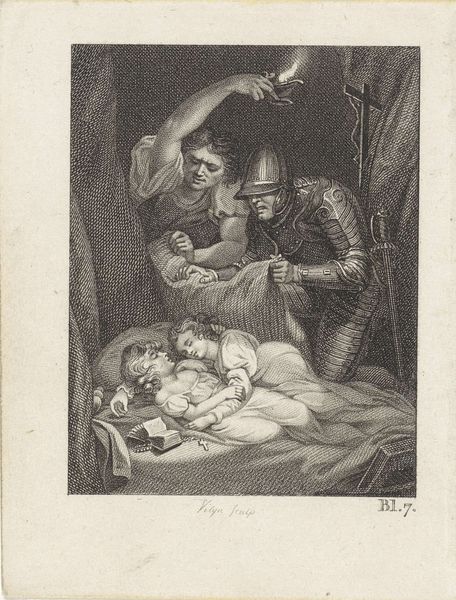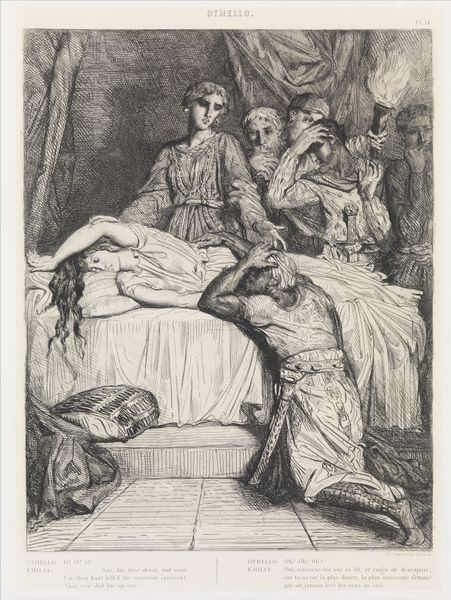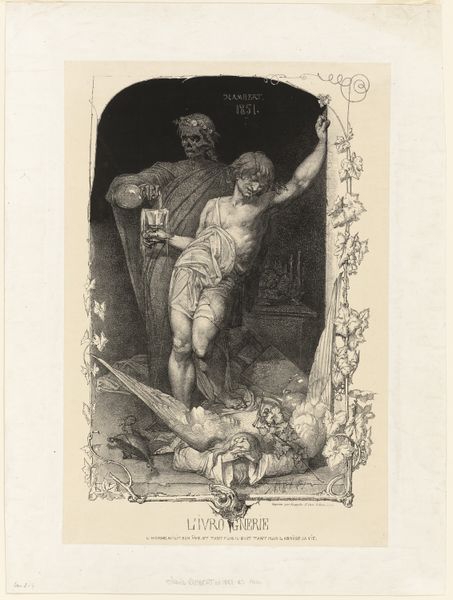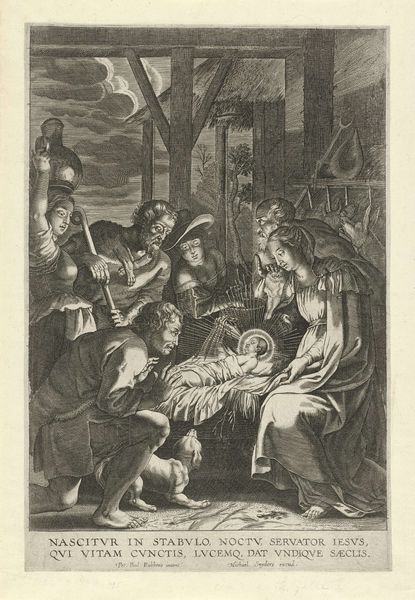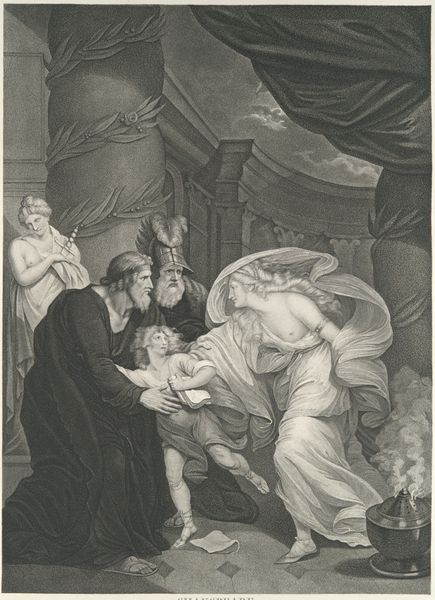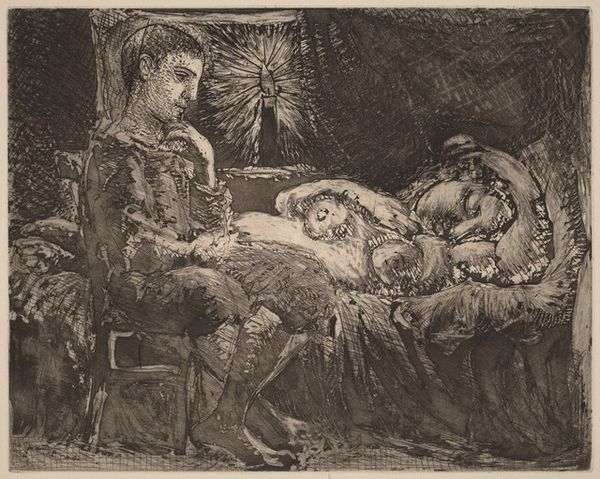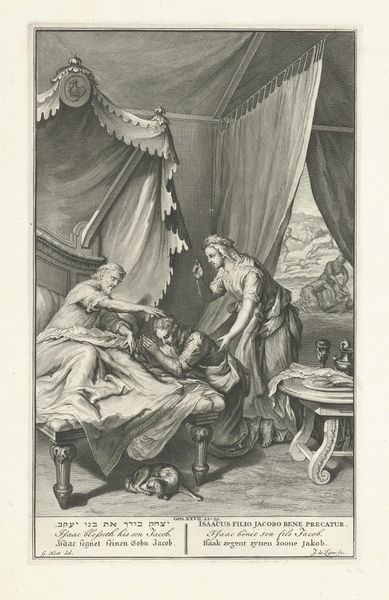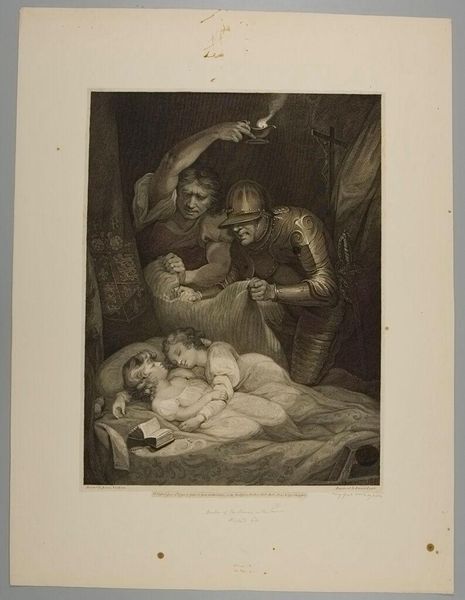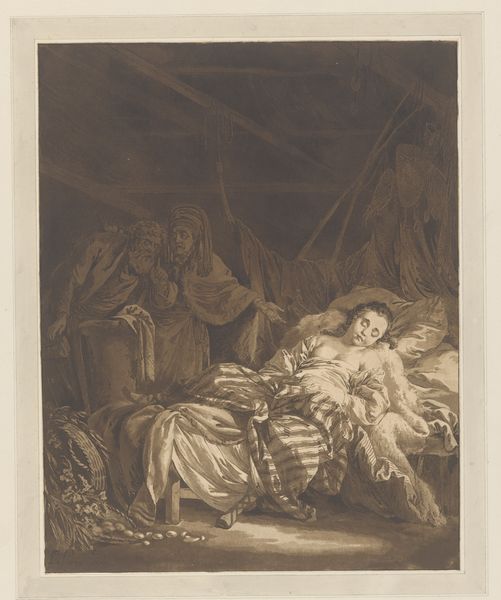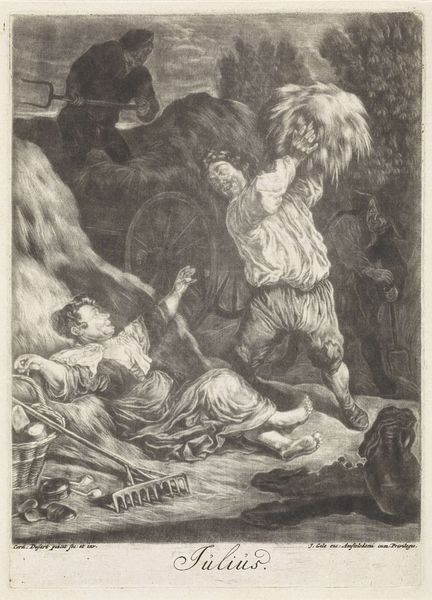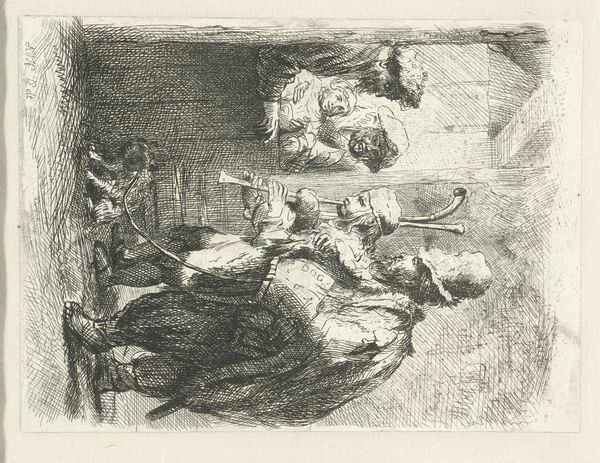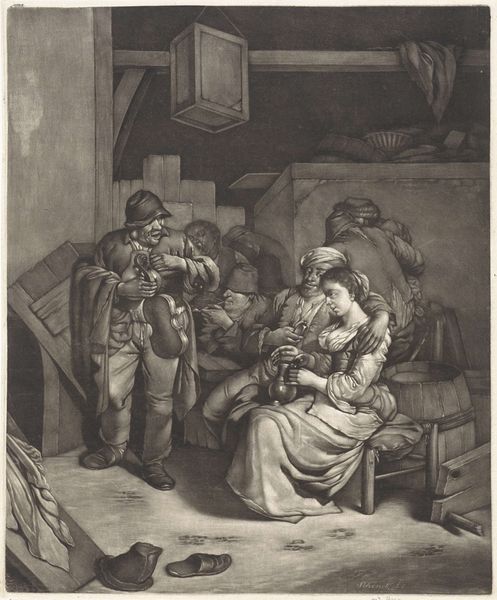
Mordet på Edward V og hans yngre bror, Hertugen af York. Fra William Shakespeares "Richard III", 4. akt, 3 scene 1790
0:00
0:00
print, etching
#
medieval
#
narrative-art
# print
#
etching
#
figuration
#
romanticism
#
history-painting
Dimensions: 572 mm (height) x 414 mm (width) (plademaal)
Editor: Here we have Francis Legat’s etching from 1790, "The Murder of Edward V and his younger brother, the Duke of York." It has such a dramatic and dark atmosphere; the figures looming over the sleeping children are menacing. What strikes you about it? Curator: Well, beyond the dramatic narrative, let's consider the material conditions that allowed this image to circulate. This is an etching, a print. Think about the implications. Multiple copies could be made and distributed widely. This democratizes the image, taking the story from the elite and placing it within reach of a broader audience. Editor: That's a great point, making it available for anyone to see. Does the printmaking process change how we see its subject, the Shakespeare play, or even historical events? Curator: Absolutely. Etching, as a reproductive medium, also changes how one views it. The lines are etched into the metal plate, and then the ink is pressed onto the paper. These are tangible processes! Romanticism often idealized history. Here, though, the act of creating a historical narrative becomes a matter of labor, ink, paper, distribution—concrete materials. How does this reframing influence your perception? Editor: It’s less about individual artistry, maybe? And more about how information is spread, or how visual narratives are commodified. The violence on display is not just acted out in the story; it’s embedded in the very means of production. Curator: Exactly! And consider who had access to such prints. What social classes consumed them? What were their political leanings? Thinking about these questions reveals a lot about the relationship between art, commerce, and the construction of history. Editor: Thinking about the audience shifts everything, really, and makes the image so much more connected to the everyday reality of its time. I'll remember to dig deeper into an artwork's material history!
Comments
No comments
Be the first to comment and join the conversation on the ultimate creative platform.
